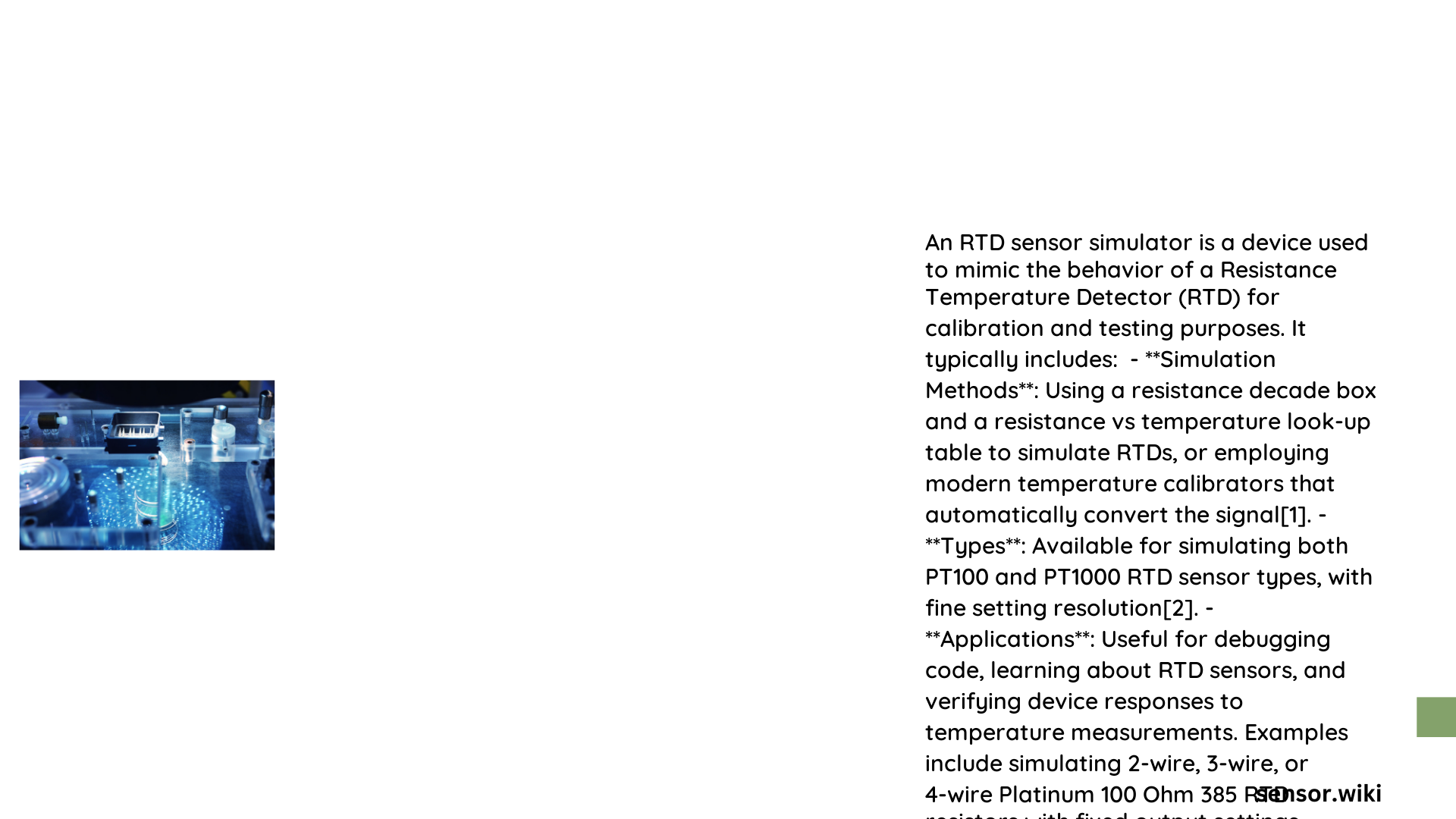An RTD sensor simulator is a sophisticated electronic device designed to replicate precise temperature measurements by generating standardized resistance signals that mimic resistance temperature detector (RTD) sensor behaviors. These advanced tools enable engineers and technicians to validate measurement systems, calibrate temperature instrumentation, and simulate complex thermal scenarios without requiring physical temperature changes, providing a critical solution for testing and verification processes across multiple industrial and research domains.
What Are RTD Sensor Simulators?
RTD sensor simulators are specialized electronic instruments that generate precise electrical resistance signals corresponding to specific temperature ranges. These devices simulate the resistance characteristics of platinum resistance temperature detectors (RTDs) like PT100 and PT1000, allowing comprehensive testing and calibration of temperature measurement systems.
Key Characteristics of RTD Sensor Simulators
| Feature | Description | Typical Range |
|---|---|---|
| Sensor Types | PT100, PT1000 | -25°C to 410°C |
| Accuracy | Precision resistance generation | ±0.1% |
| Resistance Range | Variable resistance output | 90Ω – 2500Ω |
Why Use RTD Sensor Simulators?

Professionals utilize RTD sensor simulators for several critical reasons:
- Calibration Verification
- Validate temperature measurement equipment
- Ensure accuracy of industrial temperature sensors
-
Perform systematic instrument checks
-
System Testing
- Simulate complex thermal scenarios
- Test data acquisition systems
-
Evaluate measurement chain performance
-
Research and Development
- Develop temperature-sensitive instrumentation
- Create controlled simulation environments
- Prototype thermal measurement solutions
How Do RTD Sensor Simulators Work?
RTD sensor simulators operate by:
- Generating precise resistance values
- Mapping resistance to corresponding temperature
- Providing stable, reproducible electrical signals
- Supporting multiple communication protocols
Simulation Techniques
- Resistance Mapping: Converting temperature to resistance using standardized curves
- Precision Resistor Networks: Generating accurate resistance values
- Digital Signal Processing: Implementing advanced simulation algorithms
Top RTD Sensor Simulator Tools
Pickering Interfaces 50-262
- PCI-based simulation platform
- Supports multiple RTD types
- High-precision resistance generation
- Windows-compatible drivers
IO970/IO971 Series
- Real-time temperature simulation
- Simulink integration
- Multiple channel support
- Advanced calibration capabilities
PLC Tools SIM-TRT and SIM-TRTD
- Compact DIN rail mountable
- Preset temperature outputs
- Cost-effective solution
- Simple implementation
Best Practices for RTD Sensor Simulator Usage
- Calibrate Regularly: Maintain simulator accuracy
- Understand Specifications: Know precise performance parameters
- Use Appropriate Interfaces: Match simulator with measurement system
- Consider Environmental Factors: Account for potential interference
Challenges in RTD Sensor Simulation
- Maintaining high-precision resistance generation
- Managing complex temperature-resistance relationships
- Handling diverse industrial requirements
- Ensuring long-term stability
Future Trends in RTD Sensor Simulation
- Enhanced digital signal processing
- Integration with IoT platforms
- Machine learning-driven calibration
- Increased miniaturization
Conclusion
RTD sensor simulators represent a critical technology for precise temperature measurement and validation across multiple industries. By providing sophisticated simulation capabilities, these tools enable engineers to develop, test, and maintain complex thermal measurement systems with unprecedented accuracy.
